
Bible, History, Archaeology
Bible,
History,
Archaeology
Eastern Christians
in the Holy Land
Contents:
General introduction – The map of the spread of Christianity – Christian communities – The Orthodox Church – Russian Orthodox Mission – A view of Jerusalem – The Assyrian Apostolic Church of the East – Syrian Orthodox Church – Coptic Orthodox Church – Armenian Orthodox Church – Ethiopian Orthodox Church
General introduction
The term «Eastern Christians» is commonly used in publications and the media to refer to Christians in the Middle East. It has come back into the spotlight with recent attacks on Christians in Iraq, Egypt and Syria.
Despite being the world's leading religion, Christianity is not accepted in all countries, forcing some of its followers to live in hiding.
Paradoxically, however, it is today in its original cradle that the religion inherited from Jesus is most threatened: the Near East.
At a time when Eastern Christians are often forced to flee their homelands, what will be left of their communities in the decades to come?
Christian communities
Christian communities can be divided into different basic categories: Eastern Orthodox Chalcedonians, Catholics (Latin and Uniate), Protestants (these consist of 20 former local churches and 30 new Protestant denominations) and Antechalcedonian Eastern Orthodox (miaphysites = a single nature combining humanity and divinity without mixing, a term used since the beginning of the 21st century).
With the exception of national churches such as the Armenian Church, the local communities are mostly Arabic-speaking, and are certainly descendants of the first Christian communities of Byzantine times.
 The Orthodox Church - Church of the East or Greek Orthodox Church
The Orthodox Church - Church of the East or Greek Orthodox Church
It consists of a family of churches, all of which recognize the honorary primacy of the Patriarch of Constantinople. Historically, this Church grew out of the Eastern Churches of the Byzantine Empire. The Greek Orthodox Patriarchate considers itself the Mother Church of Jerusalem, and the authority of its Patriarchal Bishop was conferred by the Council of Chalcedon in 451. It has been separate from Rome since 1054.
Image opposite: The Orthodox Church of Saint Mary Magdalene on the Mount of Olives in Jerusalem. © DR.
After 1099 and the Crusader conquest, the Orthodox Patriarchate of Jerusalem, already in exile, moved to Constantinople, and a permanent residence in Jerusalem was not re-established until 1845. Since 1662, Orthodox interests in the Holy Land have been directed by the Brotherhood of the Holy Sepulchre, which has endeavored to safeguard the status of the Orthodox Church in the Holy Places and preserve the Greek character of the patriarchate. The parishes are predominantly Arabic-speaking, and their ministers include both married Arab priests and members of the Brotherhood of the Holy Sepulchre. The community numbers 50,000 souls, mainly in Jerusalem and Galilee, with a similar number in Judea, Samaria, Gaza and neighboring countries under the Patriarchate's authority.
In 1964, a historic meeting took place in Jerusalem between Pope Paul VI and the Ecumenical Patriarch of Constantinople Athenagoras.
Two other historic national churches are also represented in Israel: the Russian and the Romanian. They are in communion with the Greek Orthodox Church and under the local jurisdiction of the Greek Orthodox Patriarchate.
 Russian Orthodox Mission
Russian Orthodox Mission
It was established in Jerusalem in 1858, but Russian pilgrims had been visiting the Holy Land since the 11th century, a few years after the conversion of Kiev prince Vladimir I Sviatoslavitch. It was under his reign (980-1015) that the conversion of the Russians to Christianity began; as such, he can be considered the founder of Holy Russia. These visits continued for 900 years, and huge annual pilgrimages began to flow in from the end of the 19th century until the First World War, when they were interrupted by the Russian Revolution.
Image opposite: A pilgrim lights a candle in the Church of the Holy Sepulchre in Jerusalem. Anton Kudelin.
Since 1949, the property titles of the Russian Church in what had become the State of Israel have been held by the Russian Orthodox Mission (Moscow Patriarchate), while those of properties located on Jordanian territory are held by the Russian Ecclesiastical Mission, representing the Russian Church in exile (after the 1917 revolution). The two missions are each headed by a archimandrite surrounded by a number of monks and nuns.
A mission representing the Romanian Orthodox Church was established in 1935. Led by a archimandrite (from Greek ἀρχιμανδρίτης (archimandrìtès), formed from ἀρχη (arkhè), «chief», «commander», and μάνδρες (màndres), «sheepfold» and by extension «cloister»; it's the image of the good shepherd), it consists of a small community of monks and nuns who reside in Jerusalem.
Over the centuries, the Georgian Orthodox Church maintained a presence in the Holy Land for many years. But as soon as Georgia gained its independence, a good number of Georgian Orthodox monks moved to Jerusalem, under the aegis of the Greek Orthodox Church.
Jerusalem, a panoramic view of the Mount of Olives. The «Golden Gate» can be seen on the right. © Nezek.
Non-Chalcedonian churches are Oriental churches. Armenian, Coptic, Ethiopian and Syrian, who rejected the teachings of the Council of Chalcedon in 451 - on the dual nature of Christ; for these churches, Christ is solely divine in nature..
The Assyrian Apostolic Church of the East
It was one of the first to exclude itself from communion with the Roman Catholic Church. Its origins date back to the See of Seleucia-Ctesiphon, which is said to have been founded by the apostle St. Thomas, as well as by St. Mari and St. Thaddeus (Addai), as asserted in the Doctrine of Addai. This church is sometimes referred to as the Nestorian Church, the East Syriac Church or the Persian Church.
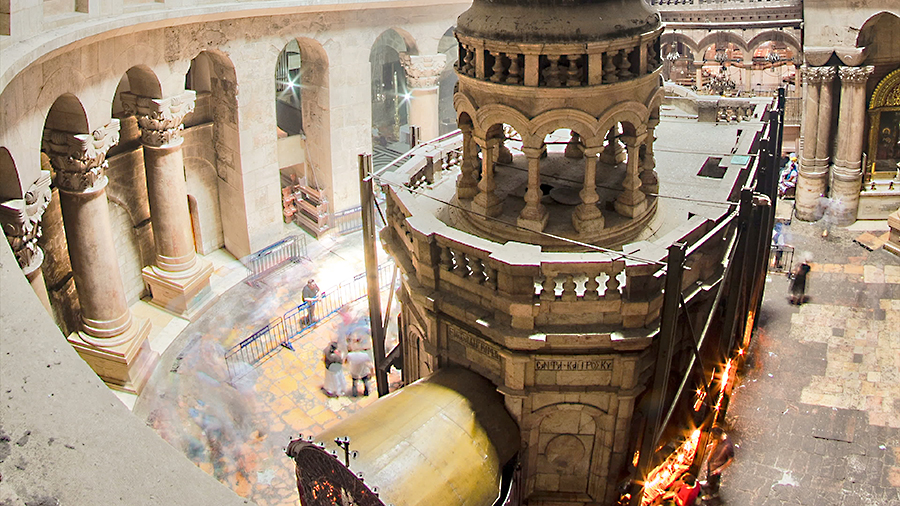
Image opposite: the interior of the Church of the Holy Sepulchre in Jerusalem. This is the holiest place in the world for Christians. The church is home to many different Christian denominations. All these communities are protected by the status quo of the Holy Places. It is also one of the seats of the Armenian and Orthodox Patriarchates of Jerusalem. Kirill Neiezhmakov.
The Assyrian Apostolic Church of the East is the original Christian Church of what was once Parthia, which covered the eastern part of present-day Iraq and Iran. In medieval times, the Church extended as far as China and India: a monument discovered in Xi'an, formerly Chang'an, capital of China in the Tang period, describes in Chinese and Syriac the Church's activities in the 7th and 8th centuries. A millennium later, a Chinese monk travelled from Beijing to Paris and Rome to ask for an alliance with the Mongols against the Mamelukes.
Before the arrival of the Portuguese in India in 1498, the Church sent «East Syrian» bishops to the Christians of St. Thomas. Patriarch Timothy (8th-9th centuries) also wrote about the large Christian community in Tibet. It uses the Syriac language (Eastern Aramaic) for liturgy and prayers.
 Syrian or Syriac Orthodox Church
Syrian or Syriac Orthodox Church
It grew out of the ancient Church of Antioch, one of the oldest Christian communities in the Near East. Among its traditions is the continued use of the Syrian language (West Aramaic) for liturgy and prayer. They are also known as «Jacobites» after Jacob Baradeus, who organized the church in the 6th century. Their Patriarch resides in Damascus. There have been Syrian Orthodox bishops in Jerusalem since 793 and permanently since 1471.
Today, the Syrian Church is headed by a bishop who resides in Jerusalem, at the 7th-century St Mark's monastery. The community comprises just a few families, living mainly in Nazareth, Haifa, Jericho, Ramallah, Beit Sahur and Beit Jala.
Image opposite: Feast day celebration in a Syriac monastery in Mosul, Iraq, early 20th century © DR.
 Coptic Orthodox Church
Coptic Orthodox Church
The Coptic Orthodox Church has its roots in Egypt, where a large part of the population became Christian in the early centuries. They claim to have arrived in Palestine with St. Helena, the mother of Emperor Constantine. This church had an early influence on the development of monastic life in the desert, particularly in Judea. The community flourished during the Mamluk period, from 1250 to 1517, and then with Mohamed Ali in 1830. Since the 13th century, the Coptic Patriarch of Alexandria has been represented by an archbishop in residence in Jerusalem. The Coptic community numbers some 1,500 members, living mainly in Jerusalem and Ramallah.
Image opposite: The Coptic Church in Amman, Jordan. © DR.
 Armenian Orthodox Church
Armenian Orthodox Church
It dates back to the year 501, the year of the conversion of Armenia, the first nation to embrace Christianity. An Armenian religious community has been present in Jerusalem since the 5th century, and Armenian sources date the first patriarchate to a charter given by Caliph Omar to Patriarch Abraham in 638. The Armenian Patriarchate of Jerusalem was established in 1311. Throughout the 19th century, during and after the First World War, the local Armenian community grew. Before 1939, there were over 15,000 members, making it the third largest Christian group. Today, this community numbers between 2,500 and 3,000, living in the Armenian quarter of Jerusalem, as well as in Haifa, Jaffa, Ramallah, Bethlehem and Amman, Jordan.
Image opposite: Etchmiadzin Cathedral, one of the oldest churches in Armenia, dating from the 5th century and located in the holy city of Ejmiatsin, Armenia © DR.
 Ethiopian Orthodox Church
Ethiopian Orthodox Church
The Ethiopian Orthodox Church has maintained a community in Jerusalem since at least the Middle Ages. Historians of ancient religions mention it in the Holy Land as far back as the 4th century. It is certain that the Ethiopian Church enjoyed significant rights to the Holy Places, but lost most of them in the Turkish period prior to the declaration of the Status Quo. Today, the small community is headed by an archbishop and reduced to a few dozen monks and nuns who live in the Old City and around the Ethiopian Church to the west of Jerusalem. Thanks to the immigration of Ethiopians (Falashas) to Israel, the non-religious community has grown to some degree and, since the restoration of diplomatic relations between the two countries, pilgrimages have also increased.
Image opposite: An Ethiopian priest studying a text from the Bible in Ahmaric. © DR.
Amharic is a Chamito-Semitic language belonging to the Semitic language family, in which it is second only to Arabic in terms of number of speakers. As a result of language policy before the fall of the Derg, the language is spoken in Ethiopia by a majority of the population, either as a mother tongue - mainly by the Amharas - or as a second or lingua franca.


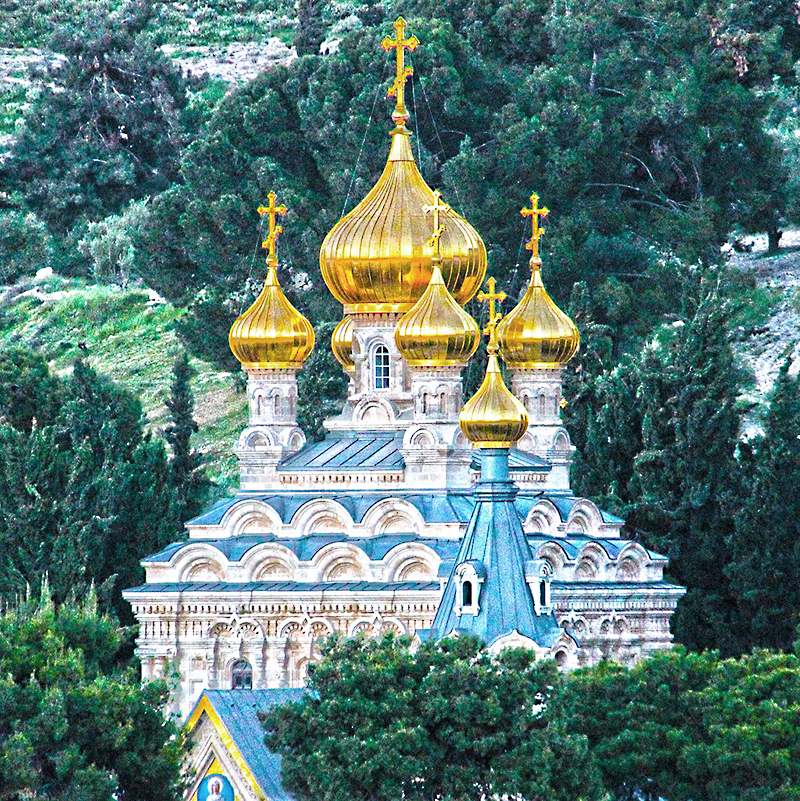 The Orthodox Church - Church of the East or Greek Orthodox Church
The Orthodox Church - Church of the East or Greek Orthodox Church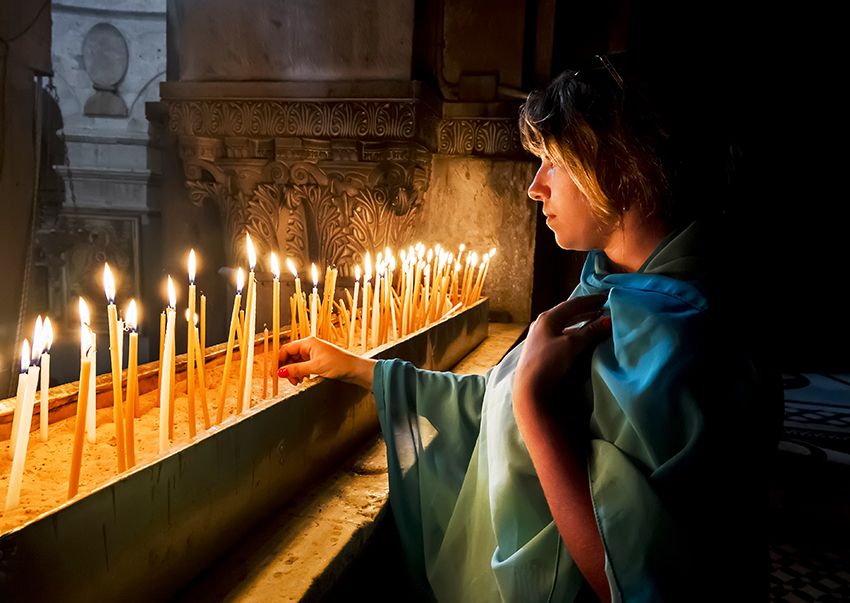 Russian Orthodox Mission
Russian Orthodox Mission
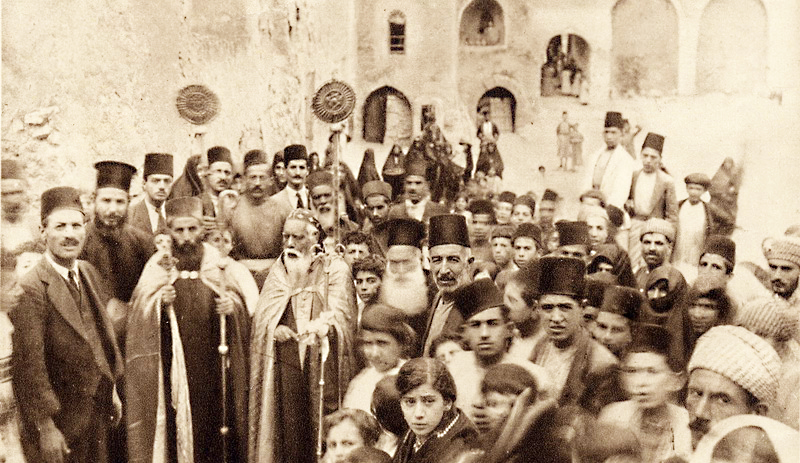 Syrian or Syriac Orthodox Church
Syrian or Syriac Orthodox Church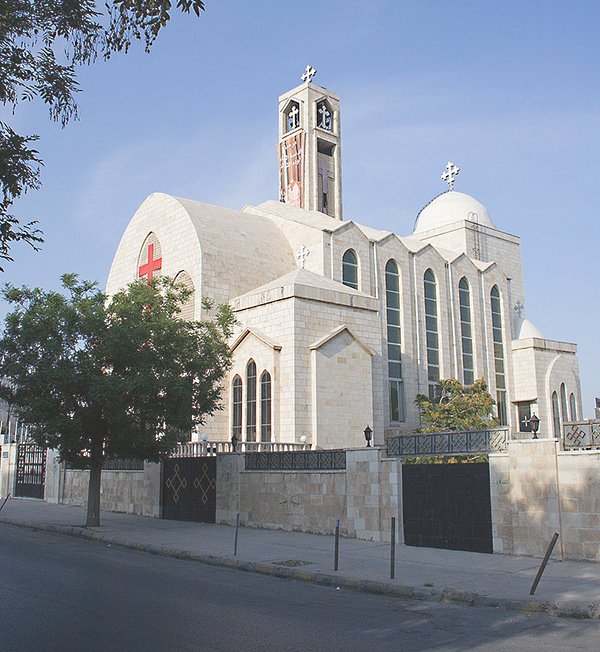 Coptic Orthodox Church
Coptic Orthodox Church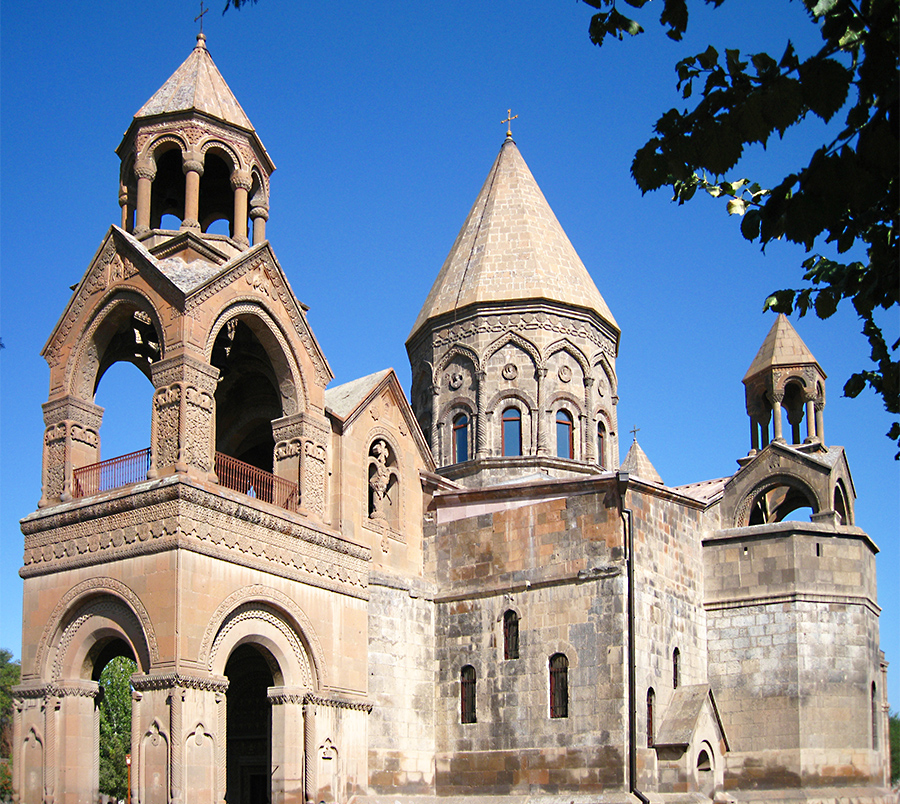 Armenian Orthodox Church
Armenian Orthodox Church Ethiopian Orthodox Church
Ethiopian Orthodox Church